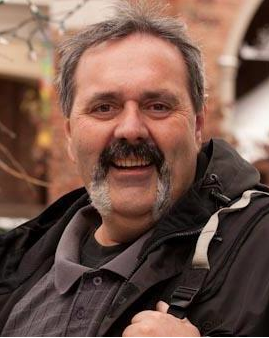Harm Reduction: How it Saved my Life (Part 2) by Randy Roberts HSWR (@RandySRoberts)
Harm Reduction: How it Saved my Life (Part 2)
Before I start, let me clear up a misconception. Addiction and physical dependence are two different issues. For example, anyone who takes opioids long term can develop a physical dependency. That’s to be expected, and it can be managed. Addiction is a psychological disorder, usually only occurring in those who have underlying psychological issues. I am discussing addiction and not dependence.
Last month I shared my story in the hopes of putting a face to addiction. This week, I want to share why harm reduction is important to me.
My story is not unique. To paraphrase Dr. Gabor Maté, all addicts have experienced trauma; the more severe the trauma, the more severe the addiction. I truly believe that addiction has saved my sanity, if not my life. Since I was a failure at suicide, my mind needed away to cope with the pain and unresolved trauma I had experienced in my first 18 years of life. I had no support and felt I had nowhere to turn for help. If not for addiction, how would I have coped all these years? And if not for harm reduction, would I still be alive today?
So, what is harm reduction? According to Wikipedia “Harm reduction (or harm minimization) is a range of public health policies designed to reduce the harmful consequences associated with various, sometimes illegal, human behaviours. Harm reduction policies are used to manage behaviours such as recreational drug use and sex work (or prostitution) in numerous settings that range from services through to geographical regions.”
There are many forms of harm reduction: seat belts, life jackets and bike helmets to name a few. These are accepted by society. But why, when applied to addiction, is there so much resistance? I feel it’s due to the stigma attached to addiction. Many people believe addiction is a choice and not an illness. Critics of harm reduction believe that by supplying drug paraphernalia, we are enabling addicts to use. I’ve heard it said that by giving addicts clean needles, we are sending the message that it’s okay to use illegal drugs. This could not be further from the truth. When I was in active addiction, I was going to use no matter what the cost. I didn’t care where I got my syringes. All that mattered was that I had to ease the pain and get that fix into my system as fast as possible. I am 100% certain that without a needle exchange I would be HIV positive.
Needle exchanges do more than hand out clean syringes. It’s a chance for addiction counsellors to connect with the addict. When I would pick up my supplies, what I thought would be a two minute in-and-out usually turned into a half hour visit. We would talk. Sometimes we spoke about life in general, and other times I would ask about options available for when I was ready to get clean. Needle exchanges are a perfect chance to engage an addict and maybe plant some hope within them. You see, we addicts feel hopeless, we feel alone. Needle exchanges are places where some hope is instilled in us. We are shown that someone cares, and that there is help out there.
Safe injection sites are another form of harm reduction. In the ten years that Insite, North America’s only safe injection site, has been open, not one death has occurred. Insite also has a detox centre located on the second floor called Onsite where addicts who wish can get help with withdrawal management.
Addicts are some of the most talented, creative individuals I’ve ever met. Many are artists, musicians, doctors, scientists and humanitarians. By saving just one life, we may very well be saving the next Mother Teresa, Albert Einstein or Vincent Van Gogh who, by the way, was addicted to absinthe and Digitalis. Who knows? We might very well be saving the most valuable person of all, a member of YOUR family!
How has harm reduction helped me? It saved me from contracting HIV and gave me the compassionate, caring human contact that I so badly craved. When I was ready it educated me about where I could receive help. I was directed to places like St. Leonard’s where I met people who showed me that I was worthy of a life free from addiction, and that I mattered to the world. There I met a councillor who saw in me the potential to be a doer in my community, and helped nurture the passion and build the self-confidence I needed in order to help “MY” people. She helped me see that even after all the years of abuse I endured, I could yet be capable of experiencing love. One day, with her continued help, I hope to feel that love for myself.
To me, harm reduction is about keeping that person alive long enough for them to experience this miracle, the miracle of recovery.
Let me leave you with this quote I found on the internet.
“I don’t promote drug use. I don’t promote car accidents either, but I still think seat belts are a good idea.” ~Author unknown
